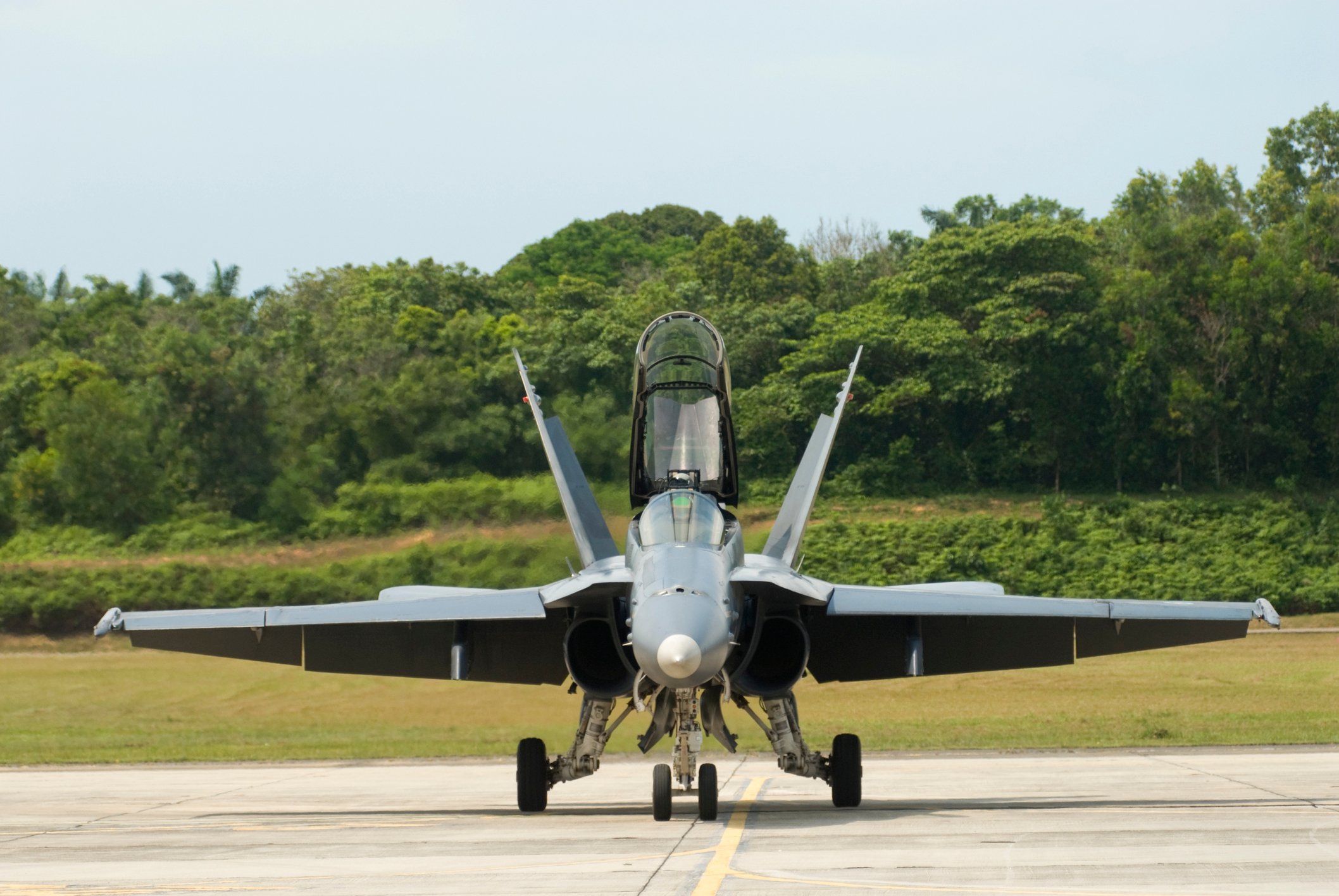Northrop Grumman's (NOC +2.39%) TERN drone for the Navy could be an even bigger deal than we initially thought.
One year ago, the Defense Advanced Research Projects Agency (DARPA) tapped Northrop Grumman to build it a TERN prototype, capable of launching from and landing on small naval warships. Just six months later, before TERN had even conducted its first test flight, DARPA decided it liked the new drone so much that it "doubled down" and ordered Northrop to go ahead and build it a second test vehicle.
Already, we're beginning to see why.
TERN at takeoff. Image source: DARPA.
What is TERN?
This is how DARPA describes TERN: "The Tern Phase 3 design is a tailsitting, flying-wing aircraft with a twin contra-rotating, nose-mounted propulsion system. The aircraft would lift off like a helicopter and then perform a transition maneuver to orient it for wing-borne flight for the duration of a mission. Upon mission completion, the aircraft would return to base, transition back to a vertical orientation, and land." (To help visualize all of that, check out the concept photo above.)
Additionally, we have learned that TERN is going to be big enough to carry 600 pounds of ordnance -- which is surprising. While TERN's name derives from the descriptor "Tactically Exploited Reconnaissance Node," this drone is being designed from day 1 to conduct combat strikes. And here's perhaps the most surprising statistic: As reported by DefenseSystems.com last week, TERN will be capable of carrying out "light strike" missions at ranges "beyond 600 nautical miles" from base.
Advance to range
Here's why this is important: The Navy's current workhorse of naval strike missions is Boeing's (BA 0.32%) F/A-18 Super Hornet. In his groundbreaking 2015 paper, "Retreat from Range: The Rise and Fall of Carrier Aviation," Captain Henry (Jerry) Hendrix (U.S. Navy, retired) notes that the current version of the F/A-18 boasts a strike range of "just beyond 500 nautical miles on internal fuel."Lockheed Martin's (LMT +4.34%) newer F-35C stealth fighter, slated for deployment in 2021, is expected to boast "an effective combat radius around 550 nm, exceeding the F/A-18 E/F Super Hornet aircraft by 50 nautical miles."
At the risk of stating the obvious, both those ranges appear to be inferior to the 600-nautical-mile range given for Northrop's TERN. Admittedly, it's probably premature to give TERN full credit for that range, given that the bird hasn't even been built yet. But just the possibility that Northrop's drone might outclass the proven range of fighter jets from both Boeing and Lockheed Martin deserves consideration.
Sure, detractors can argue that the aircraft aren't comparable. For example, Boeing's F/A-18 boasts a bomb load 30 times greater than what TERN can carry. And Lockheed Martin's F-35C is stealthy in ways TERN can't hope to replicate. Still, with its small footprint and groundbreaking design, TERN will be able to deploy from ships too small to carry an F/A-18 or F-35C. And now we learn that the drone might boast a better range than Boeing's and Lockheed's fighter as well? That's impressive stuff.
How big of a deal is TERN?
Now, how impressive might it be for Northrop Grumman's stock? That's harder to say. As we've pointed out before, TERN has so far generated more than $110 million in DARPA funding for Northrop Grumman. At an estimated $17.8 million per drone (the incremental funding DARPA allotted to build the second test vehicle), it could generate billions of dollars of sales were the Navy to decide to outfit every ship in the fleet with its own TERN.
Conversely, a lower price tag would yield less revenue per drone sold, but also widen the gap between the drone's price, and that of full-fledged fighter jets -- increasing the drone's attractiveness to a budget-constrained Navy.
For now, we'll all just have to wait until Northrop Grumman begins demonstration flights in 2018 to see if TERN lives up to its billing.








